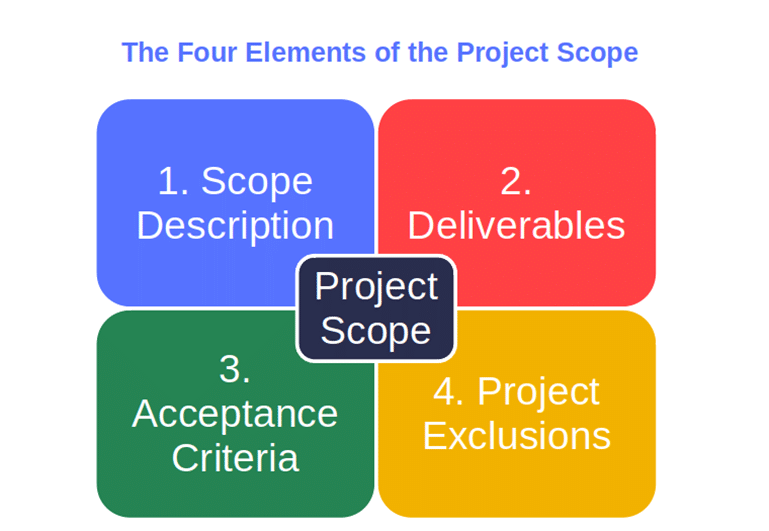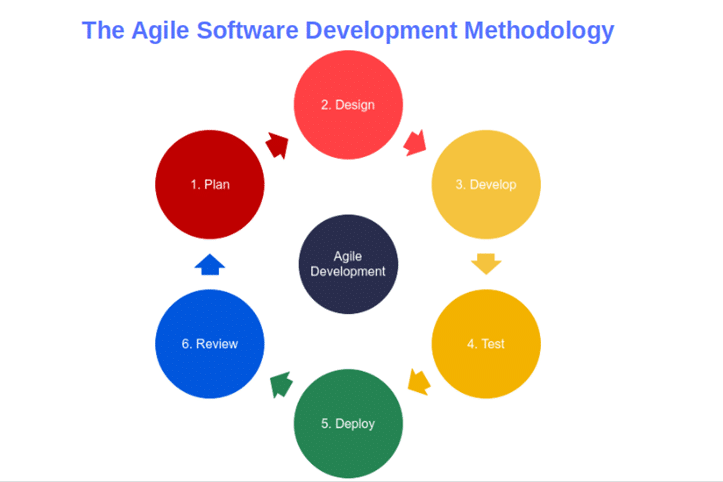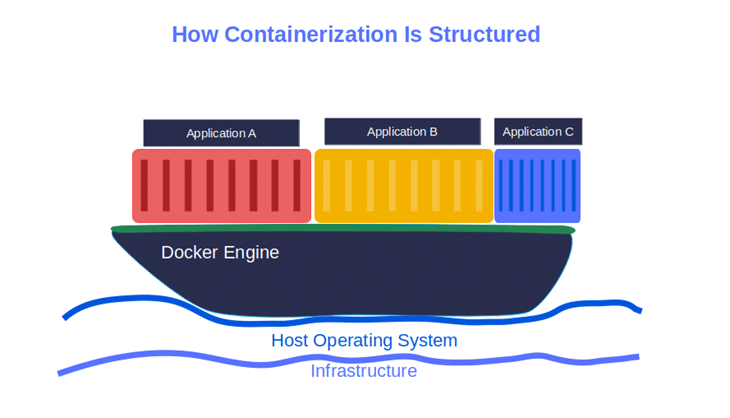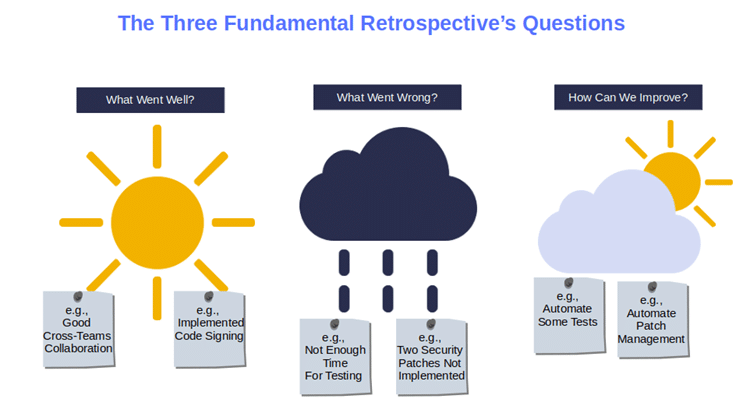What Is a Software Development Strategy?

PMI research shows that 35% of software development projects failed and suffered budget losses in 2020. Looking for ways to change this trend, and make the grade? Learn what a software development strategy is and get access to a few best-in-class examples that’ll put you on the path to success.
With our world becoming increasingly digital, already established software companies are facing a new challenge: delivering new products at the speed of light without compromising quality. At the same time, software startups sprout like mushrooms. More organizations jump on the software development bandwagon — some without the knowledge necessary to succeed.
The results? Companies create low-quality products and struggle to stay afloat. And what were the costs related to this futile endeavor? $2.41 trillion in the U.S. alone.
Want to stay ahead of the curve and ensure that your teams always deliver top-notch products without sacrificing quality and security on the altar of speed? You can’t do that without a comprehensive software development strategy.
But what is a software development strategy, exactly? We’ll explore the answer to this crucial question before diving into why having this strategy is important. Then, we’ll explore a few examples of software development strategies that’ll transform your organization into a shimmering star in the tech firmament.
What Is a Software Development Strategy?
“Strategy is not the consequence of planning, but the opposite: its starting point.” — Henry Mintzberg, Professor of management studies at McGill University, Montreal.
Yup, if you’re planning to develop a new application, you’ll have to start with creating a strategy before doing anything else. Why? Because successfully developing and releasing a winning software product can be an exciting adventure, but accomplishing this ain’t an easy task. The competition is high, and technology is changing fast. Winning customers’ attention and creating an application that’ll stand out from the crowd is a constant battle.
Therefore, software development strategy has turned into an essential part of the secure software development life cycle (SSDLC), enabling your development team to convert a simple idea into a product that:
- Creates value for the users.
- Meets your organization’s goals.
- Enhances efficiency and security.
A software development strategy is a set of decisions and directions related to all activities associated with the life stages of the product that should align with your organization’s business strategy.
Think of it like a roadmap that guides software development teams and their products to the desired destination.
Is it really necessary? Let’s find it out.
Why Having a Well-Thought-Out Software Development Strategy Matters
I worked on software development projects for more than 21 years, and I have learned the hard way what a sloppy or non-existent software development strategy can do to a project.
When I started my product manager career, the first software development project I took over from a colleague made my hair curl in shock. Prior to me joining the company, the team had tried to complete it for more than four years without success. I was stunned. I couldn’t understand why key enhancements of a critical tool used by the company had never been released after all those years, money, and efforts put into it.
No wonder the teams were frustrated, and managers and team leaders didn’t even want to talk about it! I kept on investigating and, after a few chats with the people involved, I found the root cause of the problem: a lack of directions and coordination. In other words, the team was rudderless because they had lacked a decent strategy for four years.
So, what’s the first thing I did? I rolled up my sleeves, got together all the parties involved, and started working on a deeply needed software development strategy. A couple of workshops and a few meetings later, the strategy was ready to be shared with the teams. Fast forward six months, the project was finally successfully completed, and the new features were released.
What Software Development Strategies Do
It was a challenging start as a product manager, let me tell you; but after that experience, I’ve never again started a project without having a well-grounded software development strategy. In fact, along with helping you to deliver your products on time, having a decent strategy will also:
- Help you mitigate risks and increase customer satisfaction. Including market research and regular testing into your strategy will let you identify potential issues and risks sooner. At the same time, it’ll provide you with enough information to create a product that nails your customers’ needs and expectations.
- Keep costs down and increase your return on investment (ROI). A clear strategy will avoid costly delays and mistakes caused by misunderstandings or unclear goals and requirements. Cross-functional teams will work in sync in no time, and you’ll achieve a higher ROI.
- Boost team morale and performance. Correctly allocate your resources and budget. Meeting project deadlines becomes a no-brainer when you know exactly which features you have to build, what skills or roles you need to fill, and when to carry out specific tasks. Your teams will be happier and more performant.
- Increase the security of your products. Every business relationship is based on trust. And if your product isn’t secure enough to prevent your customers’ sensitive data from falling into the wrong hands, the trust they have in you is already compromised. Security is a fundamental part of a strong strategy that no organization can do without.
Be careful, though! Building a strategy just for the sake of it can be a dangerous game. Get your strategy right and you’ll thrive; get it wrong, and it may cost you dearly. If the latter and you’re lucky, it’ll just delay the time to release or, you’ll have to invest additional money. In the worst-case scenario, though, your application may end up being discontinued, and all efforts and money put into it will go down the drain.
“No way Jose’, this won’t happen to me,” you may say. Maybe you’re right. But we all make mistakes now and then. Even a big tech giant like Google had issues with some products it developed. Since 1997, the tech giant has laid to rest at least 285 tools. Why? Probably not all these failures were caused by a poor strategy nevertheless, an effective list of dos and don’ts (i.e., a software development strategy), will minimize the chances of fiasco, and guarantee you a smoother development process.
Convinced? OK. Now that you know the rhyme and reason for having a software development strategy, why don’t you check out some shiny examples?
7 Examples of Effective Software Development Strategies
Looking for winning software development strategies? We’ve got seven to choose from.
| Software Development Strategies | Items to Consider and Benefits |
|---|---|
| 1. Define the Scope of Your Product |
|
| 2. Go Agile |
|
| 3. Automate When You Can |
|
| 4. Prioritize Wisely |
|
| 5. Put Security First |
|
| 6. Manage Your Technical Debt |
|
| 7. Leverage No-Code and Low-Code Platforms |
|
1. Define the Scope of Your Product
During a project managers workshop I attended, the trainer asked those attending to draw a hypothetical clock that should become the next most wanted bedroom accessory. This was the only guidance he gave us.
Puzzled, everyone started drawing. After 15 minutes, he asked us to present our “masterpieces.” The first unveiled drawing was incomplete. Apparently, the author got lost in adding endless features and complicated gears. Another one represented a big, steel minimalistic wall clock. When my turn came, I introduced a small, old-school, 50’s looking light blue bedside table clock, while another guy created a bedside table clock incorporating a small coffee machine.
In the end, the trainer revealed: “I wanted a digital, sun-shaped, luxury bedside table clock with a radio. No one really did that. But I am not surprised. See what happens when you ask people to build something without explaining what you’re expecting to get?”
That’s when we understood the point of the exercise. It was a clever way to show us how important it is in software development to define things like:
- What you want to build,
- Why you want to build it,
- What features you’re going to include,
- What the deadlines and milestones are going to be,
- What kind of documentation you’ll need,
- Who is going to be responsible for tackling various tasks,
- How much money you’ll have to invest (i.e., budget), and more.

I bet that if the trainer had given us all this information beforehand, we would have probably all drawn very similar clocks and finished on time. So, the first lesson learned is: clearly define your product’s scope to avoid misunderstandings and delays.
2. Go Agile
Did you know that 69% of the respondents to the 2022 State of Agile survey confirmed that at least half of applications are delivered on time thanks to the Agile methodology’s implementation?
And it gets even better. The same survey shows that for 89% of the people interviewed agreed that Agile software development benefits not only the development teams but their organizations as a whole.

Why should you incorporate Agile into your software development strategy? Because it has different deliverables (i.e., project outcomes) and timelines from the traditional (non-Agile) development process. The Agile process is:
- Iterative. It’s repeated again and again to refine and improve the software based on the feedback received.
- Divided into several sprints. Each chunk (i.e., sprint) is usually done and dusted in two to four weeks. A minimum viable product (MVP) incorporating the feedback received is released within two to four weeks.
This way, you’ll keep your project manageable, focus on what really matters, and gradually enhance the previous versions of the product.
Are you looking to:
- Make your change management more efficient?
- Minimize the time spent reworking the software based on feedback and identified issues?
- Produce high-quality, error-free software?
- Be able to change the scope or course of the project on the fly, even during development?
The Agile methodology is what you need. Want to know more about it? Check out the Agile Manifesto available on the Agile Alliance’s website.
3. Automate When You Can
According to a latest report, the lack of testing automation is the most frustrating challenge for software development teams. Why am I not surprised?! If you’ve worked in software development long enough, you’ll know very well how long it takes to manually prepare and run software tests, and why time and costs are the top concerns of manual testing.
I get it, not everything can be automated, and in some cases, you’ll still have to do things by hand. Nevertheless, replacing traditional manual tests with SAST (static application security testing) and DAST (dynamic application security testing) tools and automating repetitive tasks, will help you to:
- Drastically reduce human errors,
- Free up some of your developers’ time to let them focus on more important assignments,
- Speed up development, and
- Fix flaws on the go, thereby reducing the days of exposure to vulnerabilities by up to 32.6%.
Containerization (i.e., bundling an application and all its necessary dependencies in a single package) and Docker registries are other automation tools that you may want to add to your software development strategy. Using this approach may help you to:
- Streamline the deployment, and
- Simplify the management of highly complex systems.

Ultimately, are you planning to shift-left security and implement secdevops (more on that in a moment)? If so, then automation is something you won’t be able to do without.
4. Prioritize Wisely
Let’s go back for a minute to the time I was working as a product manager. Often, when people from other teams knew we were working on the development of a new product, many would inundate me with feature requests.
Believe me, now I know how the guy wearing Santa’s costume at the mall during the holidays feels when he’s “assaulted” by kids begging for presents or candies. Don’t get me wrong, it’s always great to know that there’s a huge interest in the software you’re working on. But no matter how eager you are to satisfy all requests, you simply can’t do that.
Want to avoid your project ending up in absolute chaos? Prioritize. Do you remember when we talked about MVP? Take that same approach by identifying specific criteria to ensure your strategy gives precedence to:
- The feedback collected from those early testers,
- From your users (e.g., through market research), and
- To the features that help you meet your business goals.
I know, sometimes it’ll be challenging to say no to managers and your CEO, but it’ll be for the greater good. Because at the end of the day, if you want to sell your product, it’s your customers’ expectations you must satisfy.
Give it a try. When they’ll see those sales figures reach the sky, they’ll be happy, too.
5. Put Security First
A software development strategy isn’t complete if it doesn’t encompass security. Enterprises know it, and in 2022, 68% of them shifted security left in the software development process (i.e., secdevops) to give some security responsibilities to the developers too.
Why? Because in the digital world, software is never secure enough. In the first three months of 2023, 6,977 new vulnerabilities were identified (i.e., 11% more than in Q4 2022), and 33% of full stack exposures discovered were critical or high severity.
Hence, most software development strategies incorporate, among others security initiatives:
- Signing your code, containers, software, etc. Enforce the use of code signing certificates issued by a trusted certificate authority (CA) to sign your codes during the whole development process life cycle. It’ll protect your organization and customers from malware infection and data breaches caused by code tampering.
- Effectively manage vulnerabilities and security issues. Ensure your teams are always up to date with the latest software vulnerabilities and use automation for testing and patch management. It’ll keep your code more secure and let you fix issues faster.
- Software security checklists. How can you be sure you didn’t forget to install a fix or check a component before releasing your new application? Use a software security checklist and you’re done.
- Security best practices. Follow a list of security-related best practices (e.g., safely storing your code signing certificates and keys). Taking this approach will increase collaboration and the security of your products.

6. Manage Your Technical Debt
How many times in your latest software projects have you chosen speed over quality and security, or had to cut corners to deliver the product on time? Don’t be ashamed; we’ve all been there. In fact, 74% of the companies surveyed by Invicti in 2022 admitted to knowingly releasing software with unmitigated vulnerabilities.
Procrastinated, unfixed bugs are what make your tech debt grow. But, if nearly everybody has some form of technical debt, why should you even consider it when building your software development strategy? Because if it isn’t kept to a minimum and properly managed (i.e., the accumulated issues are never addressed and keep on growing exponentially), it’ll eventually spin out of control. Just like unpaid debts grow due to mounting interest.
The implications? Your software becomes less secure; thus, more vulnerable to malware infections and data breaches. For instance, the recent LockBit ransomware attack suffered by a dental care provider, Managed Care of North America (MCNA Dental) exposed a whopping 9 million U.S. dental patients’ data.
I bet you wouldn’t like being in their shoes. To avoid this, after pinpointing the root causes of your technical debt, create a strategy around it to effectively address it, little by little. For example:
- Implement security as a code (SaC). This will help to embed security checks and processes in your SDLC.
- Invest in technical and security training. Ensure your teams understand the consequences of releasing insecure code (e.g., vulnerable, unsigned software).
- Follow security best practices. This will help protect your organization and customers’ sensitive data from potentially devastating breaches.
- Leverage the power of bi-weekly Agile retrospectives. This approach will help you understand what you did well, what you need to improve, and how.

Want to uncover more tech debt causes and solutions to create a stellar software development strategy? Check out our latest article on technical debt.
7. Leverage No-Code and Low-Code Platforms
Wouldn’t it be marvelous if you could develop and launch a secure, high-quality application in a matter of days? No-code and low-code application development platforms can make this a reality with their intuitive, drag-and-drop interfaces.
Low-code application development technologies are becoming such a hit that their worldwide market is estimated by Gartner to reach an impressive $31.9 billion by 2024. Several enterprises are including them in their software development strategies to:
- Minimize manual coding,
- Free up time for their developers to focus on quality, security, and more complex projects,
- Develop state-of-the-art, scalable solutions without incurring high costs, and
- Effortlessly deliver continuous improvements patches and new features to continuously adapt their products to meet customers’ needs.
Isn’t this a great action item to incorporate into your software development strategy?
Ta-da! You’ve just uncovered seven top-scoring examples of software development strategies. Now, it’s time to put into practice what you’ve learned so far. Make your choices, be different, and create your strategy.
Final Thoughts on What a Software Development Strategy Is
Now that you have a better idea about what a software development strategy is, it’s time to start building one. It’ll help you enhance the quality of your software while decreasing the time spent building it.
Ensure you follow an agile approach, automate monotonous tasks, prioritize security, and reduce your technical debt. It might take some time; however, with a flawless development strategy in place, you’ll start seeing the benefits of it.
Your team productivity will improve, your customer satisfaction level will increase and, consequently, your sales will grow. C’mon, getting those products on the market when your customers want them, and how they want them, has never been easier now that you nailed the right software development strategy.


